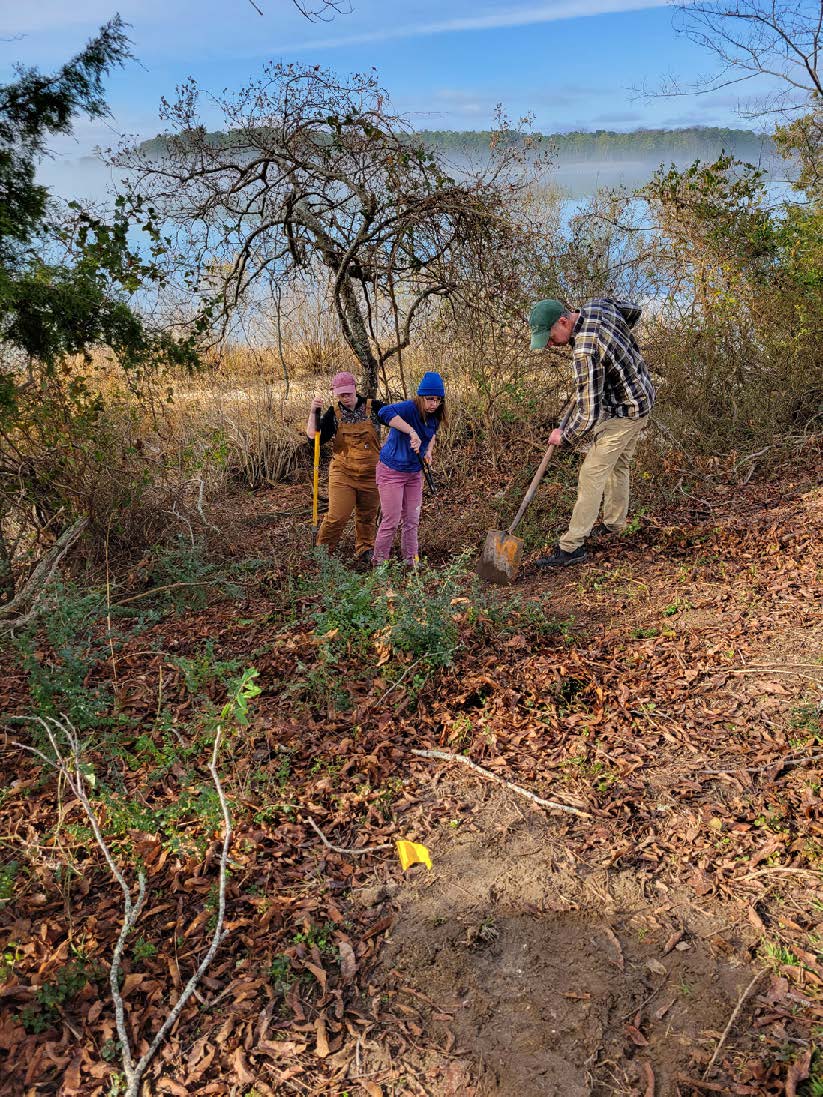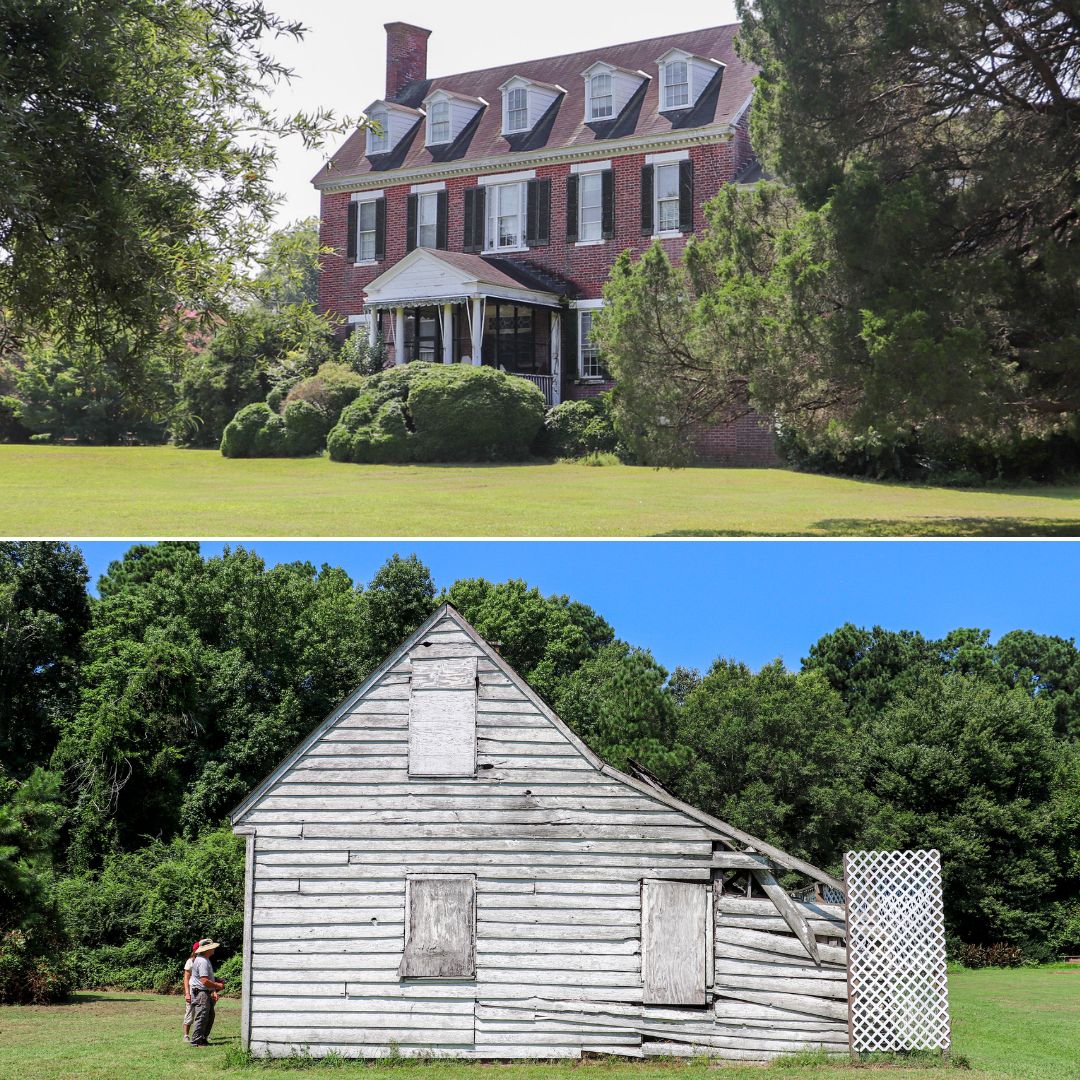Case Study in Preservation Excellence: Central State Hospital’s Unmarked Cemetery
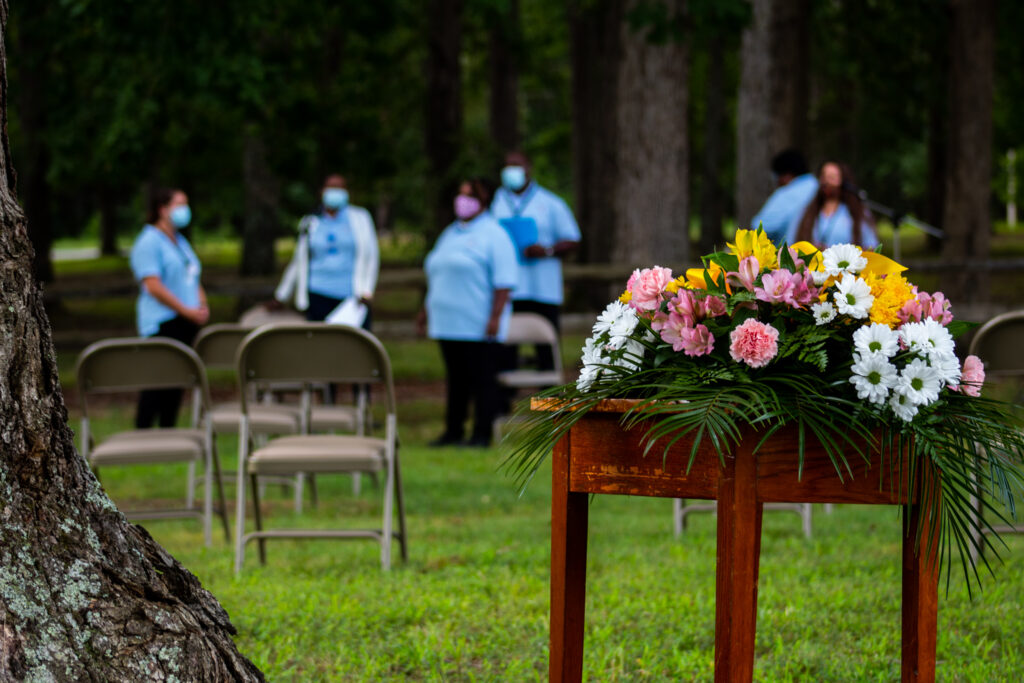
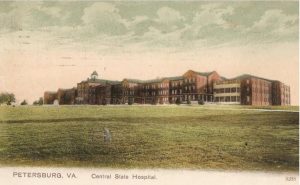
[The following is extracted from the Report on the Stewardship and Status of Virginia’s State-Owned Historic Properties, 2021–2023]
In 1870, the state of Virginia established the first institution in the United States dedicated to the treatment of African Americans with mental illnesses, the Central Lunatic Asylum in Dinwiddie County. The facility, desegregated in 1968, has evolved into today’s Central State Hospital (CSH), part of the Department of Behavioral Health & Developmental Services (DBHDS), and now houses the only maximum-security mental health unit in Virginia.
The CSH campus contains two known cemeteries where hospital officials historically interred deceased patients. One burial ground, the well-maintained Hiram W. Woods Cemetery, the hospital established in or around 1930. Its graves are marked with concrete crosses or stones set flush with the ground. By contrast, a roughly four-acre burial ground at the intersection of 7th Avenue and Westmoreland Circle is known simply as the “Unmarked Cemetery.” When DHR visited the cemetery in 2019 to document it at the request of CSH, it contained two traditional headstones and smaller, cast concrete grave markers—narrow obelisks—scattered across the property; all were toppled and largely buried beneath soil and leaf litter. The cemetery appeared emblematic of a population marginalized by race as well as the stigma of real or perceived mental illnesses.
Since 2019, however, because of CSH’s ongoing diligence in preserving its historical records and proactive state stewardship of the Unmarked Cemetery, there is good news to report. That news results from a confluence of fruitful collaborations between multiple partners: DHR, DBHDS, the Department of General Services, Virginia State University, Virginia Commonwealth University, the University of Texas–Austin, the University of Michigan, Michigan State University, the University of North Carolina–Chapel Hill, Dinwiddie County Historical Society, and Friends of Central State Hospital. Funding from the Andrew W. Mellon Foundation also provided key support.

Preserving CSH Records
In 2007, CSH staff expressed concerns about the deterioration of its nationally important historical documents, housed in a non-archival environment. In response, in 2008, CSH initiated an unfunded project within the African American Studies program at the University of Texas at Austin led by Dr. King Davis, a UT professor and former Commissioner (1990-1994) of DBHDS. For more than a decade, Dr. Davis’s research investigated the records of CSH, as the archives project collected, copied, organized, and analyzed patient, organizational, and policy data from CSH as well as survey findings from other states and related academic projects.
In 2015, Dr. Davis’s research received a needed boost when the Andrew W. Mellon Foundation generously funded the project. As the principal investigator for an $800,000 multi-disciplinary digital archives project, Dr. Davis’s research focused on redesigning urban mental health services and preserving historical data on those services for African Americans in Virginia from the 1700s through the 1900s. Dr. Davis also addressed additional research topics supported by the Mellon grant.
The Unmarked Cemetery
Partially coinciding with Dr. King’s research, in late 2018 DHR began working with CSH on issues pertaining to the Unmarked Cemetery, after CSH staff first expressed their concerns to DHR about the cemetery’s condition. In addition to the haphazard condition of its grave markers, the cemetery lacked any signage or means of protection. The staff requested guidance from DHR on how CSH could protect the cemetery and its burials. As a first step protective measure, DHR documented the cemetery in 2019, as described above.
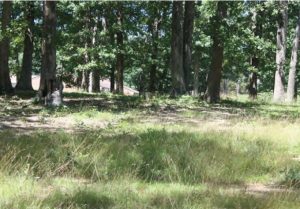
Seeking to highlight and honor the cemetery, CSH proposed in 2019 installing an interpretive marker to inform people about the burial ground. DHR staff archaeologists worked with CSH staff to determine appropriate locations for the marker as well as a small visitor parking area, and then conducted a series of shovel test pits where the sign and parking lot would go to ensure their installation would not disturb unmarked graves or other important historic features.
While that work proceeded, DHR’s collaboration with CSH advanced significantly after the Virginia General Assembly approved legislation in 2019 authorizing construction of a new Central State Hospital building, slated for completion by 2024. In early 2020, DGS (on behalf of CSH/DBHDS) brought the New Central State Hospital and Related Demolitions Project to DHR for review in compliance with the Virginia Environmental Impacts Report Act (§ 10.1-1188 Code of Virginia).
DHR’s review pointed out that the project’s proposed demolition of Buildings Nos. 78 and 68 would have an adverse impact on the historic state property. DHR made that assessment because the two buildings met criteria for listing on the Virginia Landmarks Register and National Register of Historic Places as contributing structures in a potential Central State Hospital Historic District. Concurring with DHR’s assessment, DGS agreed to mitigate—a process guided by state code—the loss of the buildings by conducting an archaeological survey. Normally, a standard mitigation agreement would have focused solely on the area of impact for construction, in this case, the site of the New Hospital. Nevertheless, DGS generously agreed to extend its mitigation actions to include an archaeological study of the Unmarked Cemetery coupled with background research and delineation of the cemetery’s boundaries. In October 2020, DGS and DHR executed a Memorandum of Understanding spelling out the called-for mitigation.
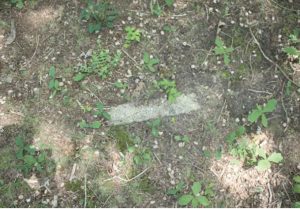
By late 2020, archaeological fieldwork at the Unmarked Cemetery was completed; a technical report about that fieldwork is now in the draft stage. Nonetheless, preliminary findings indicate that separate on-campus colonies for patients with tuberculosis or epilepsy provide examples of the diseases and other afflictions that may have caused both a need for quarantine of specific populations and the high number of deaths at the hospital. An initial review of late-19th and early-20th century CSH records suggests that, on average, between 5 and 10 percent of the patient population died each year—and the hospital carpenter fabricated coffins, the patients dug graves, and ministers from local churches performed services for the deceased.
After conducting a comprehensive ground-penetrating radar (GPR) survey, archaeologists believe the Unmarked Cemetery contains between 4,200 and 4,500 tightly spaced graves. The GPR survey also found evidence for graves beyond the modern boundary fence to the cemetery’s northwest and possible graves east of 7th Avenue. Interestingly, within the existing cemetery boundaries, all gravesites are located on the west and central portions of the burial ground—while the eastern side appears devoid of graves. Only one of the two headstones in the Unmarked Cemetery is legible, showing an interment date of 1916. Hospital death records indicate that the earliest burial in the area was in 1884, and CSH Physical Plant Services records reveal that CSH continued using the site until 1924.
The importance of the Unmarked Cemetery lies in its ability—through archaeology and an examination of the hospital’s social history—to be an enormously significant source of information. There is still critical work to accomplish. At a minimum, future investigations should include:
- Additional survey outside of the visible boundaries to determine the effects of construction on the cemetery,
- Efforts to obtain a full count of grave features and markers,
- Further research into death records to build life histories for individuals buried there, and
- Development of a long-term maintenance plan specific to the cemetery.
Ceremonies of Remembrance and a 150th Anniversary
On September 24, 2020, a virtual celebration convened to mark CSH’s 150th anniversary (view a video). Governor Ralph Northam introduced and read a proclamation commemorating the origin of the hospital in 1870. DBHDS Commissioner Alison Land and Dr. Davis also spoke. A companion anniversary event, the Dr. S. Hughes Melton History Symposium, occurred virtually on October 22 and 23, at the campus of Virginia State University. Four distinguished speakers shared their research and the implications of their findings to explain the current and future value of increasing family, public, and scholarly knowledge of how 19th century racial ideas and policies influenced the evolution and functioning of state mental hospitals into the current century. These 150th anniversary events—along with its diligent stewardship of its historical records and burial grounds—exemplify DBHDS’s innovative partnerships and commitment to educating the public about the importance of CSH.
The preservation efforts led by DBHDS and DGS, and collaborations among the various partners, are returning a sense of dignity to the individuals interred in the Unmarked Cemetery; in doing so, this work recognizes the Commonwealth’s history in a way that respects its complexity. CSH staff certainly returned that sense of dignity to the Unmarked Cemetery during an August ceremony (view a video), prior the 150th anniversary. To mark completion of the signage-and-parking-area project, CSH staff diligently planned—what became due to Covid—a virtual remembrance ceremony for the individuals buried in the cemetery. During the occasion, DBHDS Commissioner Land spoke, the CSH Choir performed a spiritual medley, and CSH’s staff member LaTandra Jackson recited a poem she authored:
Forgotten No More
We lay flowers at your feet
Your fences shall ribbons keep
Forgotten No More
On tongues of many, we sing songs of yesterday
Remembering your footsteps have tread this way
Forgotten No More
May our prayers encapsulate this sacred place
From sunrise to sunset each and every day
Forgotten No More
–Adrienne Birge-Wilson
State Stewardship Coordinator &
Project Review Architectural Historian &
Review and Compliance Division, DHR
with contributions from Joanna Wilson Green
Easement Program Archaeologist,
with thanks to Dr. King Davis
Download a PDF of this article.




